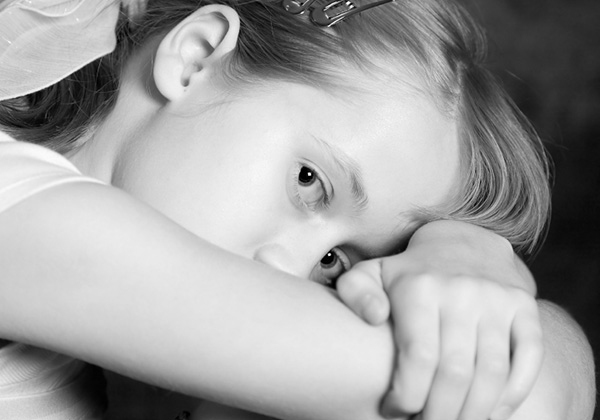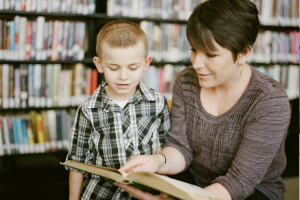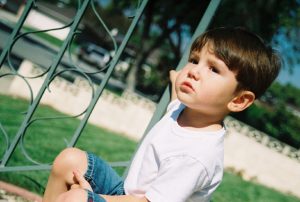Disorganized Attachment: How Disorganized Attachments Form & How They Can Be Healed
What is disorganized attachment?
When a child has an ideal attachment, the parent or primary caretaker provides the child with a secure base from which the child can venture out and explore independently but always return to a safe place. When a parent or caregiver is abusive, the child may experience the physical and emotional abuse and scary behavior as being life-threatening. The child is stuck in an awful dilemma: her survival instincts tell her to flee to safety, but safety may be in the very person who is frightening her. The attachment figure is thus the source of the child’s distress. In these conditions, children often disassociate from their selves. They may feel detached from what’s happening to them. What they’re experiencing may be blocked from their consciousness. A child in this conflicted state develops a disorganized attachment with their parental figures.
Disorganized attachment arises from fright without solutions. Parents can frighten their children in different, often unconscious, ways. It might be through abuse or neglect, but it could also be through unresolved trauma and loss in the parent’s own life that leaves him or her feeling afraid, which unintentionally scares the child.
How is disorganized attachment expressed in children?
Children are born with the instinct to seek care from adults; their survival depends on it. They are therefore highly motivated to form an adaptable strategy to get their needs met, even by a far from perfect or unsafe caretaker. A disorganized attachment results when there is no organized strategy that works for the child. Their parents’ behavior is unpredictable, so no organized strategy allows them to feel safe and get their needs met without fright and terror.
Attachment expert, psychologist and researcher Dr. Mary Ainsworth conducted the “Strange Situation” test, in which she noted how a young child reacts when a parent leaves the room and then comes back. What Ainsworth actively measured was reunion behavior on the second reunion. She found that a child with a secure attachment will get upset when the parent leaves, but when the parent returns, the child will come to the parent for soothing , easily calm down and continue to play on his or her own. A child with a disorganized attachment expresses odd or ambivalent behavior toward the parent, (i.e. first running up to them, then immediately pulling away, perhaps even running away from the parent, curling up in a ball or hitting the parent.) The child’s first impulse may be to seek comfort from the parent, but as they get near the parent, they feel fear to be in their proximity, demonstrating their disorganized adaption.
How does disorganized attachment develop?
In Mary Main’s research, utilizing the Adult Attachment Interview she developed, she found that unresolved trauma and loss in a parent’s life is the best predictor of disorganized attachment between a parent and child. Parents who have experienced trauma in their early lives and have not resolved that trauma by feeling the full pain of their childhoods and making sense of it are likely to engage in disorienting behavior with their child. Research has shown that it is not necessarily how bad someone’s childhood was that impacts attachment between parent and child, but how much they’ve been able to make sense out of and feel the full pain of their past, creating a coherent narrative. The better able someone is to resolve trauma and conflict from their early lives, the better able they will be to form a secure attachment with their child.
Having experiences of abuse, neglect or unresolved trauma in one’s early life can have lasting residue that leaves a parent prone to being flooded by emotions in times of stress between them and their child. Studies have shown that 20-40 percent of the general population has a degree of disorganized attachment, while 80 percent of children who have been abused have a disorganized attachment to their parent. Disorganized attachment can be passed from generation to generation, because parents who struggle with unresolved trauma themselves may have trouble tolerating a range of emotions in their child. They may react to their kids with fear or other primal emotions within them that surface in moments of stress. At these moments, the parent may act out destructive behavior and not even be fully aware of how they are behaving.
What does disorganized attachment in adults look like?
Parents whose relationship with their child is a disorganized attachment may react by being frightened or frightening in moments of stress with their child. They may act in ways that do not make sense, demonstrating unpredictable, confusing or erratic behavior in these relationships. In the Adult Attachment Interview, researchers found that individuals with a disorganized attachment often can’t make sense of their experiences. They have trouble forming a coherent narrative. If they suffered abuse, they may offer unusual explanations for their abuser’s behavior. When they’re asked to convey details of their relationship with their parents, their stories are fragmented, and they have difficulty expressing themselves clearly.
A person who grew up with a disorganized attachment often won’t learn healthy ways to self-soothe. They may have trouble socially or struggle in using others to co-regulate their emotions. It may be difficult for them to open up to others or to seek out help. They often have difficulty trusting people, as they were unable to trust those they relied on for safety growing up. They may struggle in their relationships or friendships or when parenting their own children. Their social lives may further be affected, as people with secure attachments tend to get on better throughout their development. Children with secure attachment are often treated better be peers and even teachers in school. On the other hand those with disorganized attachment, because they struggle with poor social or emotional regulation skills, may find it difficult to form and sustain solid relationships. They often have difficulty managing stress and may even demonstrate hostile or aggressive behaviors. Because of their negative early life experiences, they may see the world as an unsafe place.
How can someone heal from disorganized attachment?
The important message to take away is that there is such thing as “earned secure attachment.” People with disorganized attachment can heal by making sense of their story and forming a coherent narrative. Writing a coherent narrative helps people understand how their childhood experiences are still affecting them in their lives today. Through this process, they can find healthier ways to deal with unresolved trauma and loss by facing and feeling the full pain of their experiences. Hiding from their past or trying to bury their emotions doesn’t work, as painful feelings will be triggered in moments of stress. In PsychAlive’s online course with Drs. Dan Siegel and Lisa Firestone, they will walk individuals through the process of creating a coherent narrative to help them to build healthier, more secure attachments and strengthen their own personal sense of emotional resilience. Getting help to resolve early trauma can come in many forms. Most important is to form a healthy relationship that exists over time with a romantic partner, a friend or a therapist, which allows a person to develop trust and resolve his or her issues with attachment. This can help a person to break the cycle often perpetuated by the formation of a disorganized attachment.

In this Webinar: This online workshop with Dr. Lisa Firestone will provide tools to help people heal insecure attachment, resolve trauma, integrate their…
To learn more about how to write a coherent narrative and develop an earned secure attachment, join Dr. Lisa Firestone and Dr. Daniel Siegel for the online course “Making Sense of Your Life: Understanding Your Past to Liberate Your Present and Empower Your Future.”
Read More About Attachment:
What is Your Attachment Style?
Identifying Your Child’s Attachment Style
Watch Dr. Dan Siegel on Disorganized Attachment:
:
Tags: adult attachment, attachment, attachment patterns, attachment styles, child attachment, child to adult development, disorganized attachment











Well, applies to me. It’s deeper than love, and it would be highly responsible for the self also. I forgot the name of the neuroscientist. Basically it is about trying in place of receiving. I remember a physical therapist labeling me this way.
From a strange situation, to a mad situation. It doesn’t stop. I don’t know.
🙁
My FIRST memories are of BEGGING my mother to tell me I was adopted. She would assure me I was not as “We were too old to adopt”. They were, too. The last time I asked I pounded my fist on my thigh and told her just tell me, “I know I’m adopted”. Again, I heard, “We were too old”. Soon after that she showed me my birth certificate and later the bill from the hospital. That satisfied me. I didn’t know how to put voice to the concern that I had and it had little to do with their age. It was because I didn’t fit in with the extended family. No one seemed to like me. My maternal family certainly did not like me as they saw me as I was: too much like father in appearance, spoiled, lazy. My father’s much older children by an earlier marriage did not seem to like me. They did not see me until I was two years old. As an adult I wondered had I been of brilliant intelligence like they were, “would they have liked me more?”. I always assumed I was too much like my mother for them to like me. I did like my father’s extended father and relished the time I spent with them. I adored my father as a young child and could remember him rescuing me from when my mother would decide to clean the house on Saturdays and the shrieking and screaming at me she would do. We spent every holiday and every summer with the maternal grandparents that did not like my father or me. We were parceled out one day to go visit the paternal family during the summer. I looked forward to this time but as time went on and I was less and less engaged with the cousins my age feeling more and more like a stranger to them. None of this made any sense to me until this past Christmas when the family secret was revealed. My mother had “a nervous breakdown” when I born. I was born in 1953. Putting the pieces together I believe she was taken to the state mental institution. I believe I was would have been taken to my father’s family. He had a loving, nurturing family far from how my mother’s family would be described. No one could believe I didn’t know this. I struggled to remind them, “it’s not like I could remember and NO ONE told me”. Apparently it was common knowledge in rural community where the maternal family lived. It was like a deck of cards being shuffled. Finally they were shuffled in my favor only I was 60 years old. EVERYTHING made sense. The coping mechanism I never had. The sudden flashes of anger over truly inappropriate stimuli made sense. My inability to have long lasting relationships. All of it made sense. I suppose now I will live my life being grateful for modern antidepressants, therapeutic relationships, and successful children. I am the poster adult for disorganized attachments.
I just read your story Judy and found it very moving. Thank you for sharing. It is quite beautiful that you have come to such an amazing point where you have gained such clarity and it just goes to prove attachment styles and early childhood experiences have a pervasive affect, yet with the right support, guidance and sheer inner strength you seem to have given yourself some peace and clarity. Thank you again for sharing your story of adversity and strength. I’m sorry you had such a lot to cope with no child deserves to feel that way, and no adult does either.
Warm wishes H
I was hospitalized for the first ten years of my life in a children’s’ hospital due to birth defects. I would spend four – six months a year there with surgeries and physical therapy. Then I was allowed to go home for a few months to attend public school. My parents would not tell me when I would be returning for more painful bone surgeries, so each occurrence was traumatic. I would be kidnapped and thrown into the car to return to the hospital by my mother and siblings. This after falling on the floor and become hysterical, terrified of what I was to face.
When I returned home for the final time, my father got me involved in a sport, and I was very successful, receiving world wide publicity. My self esteem in the male world was quite secure as a result.
My self esteem with female romantic partners was very low, however; and I would become anxious and terrified when girls would express feelings for me. I fainted when one kissed me. I spent ten years struggling with my intense desire to find love, while at the same time fighting with my feelings of terror.
I would use my social skills to find and attract girls, then let the relationships die when things got close to intimacy. In my mid twenties, I met and formed a solid friendship with a desirable woman at work. We took things slow so I could adapt and progress in the relationship a very slow pace. She was understanding and patient. She accepted my shyness (terror) and didn’t put pressure on me. I took a chance and fought through the terror and saw that she was not going to abandon me suddenly. We have been married for 28 years.
The forced hospitalizations, in a cold institution where the nurses did not have time to nurture us, the estrangement from my family since birth, fully surfaced recently in nightmares as PTSD. I am in EMDR therapy to process this trauma. Thankfully, the well know children’s hospital no longer warehouses, parents stay with the child and sleep in the same room. The children are quickly discharged for healing and physical therapy as an outpatient. Learning about Disorganized Attachment has helped me make sense out of my life. I am now in the grieving stage for the happy childhood I didn’t have.
Such a lovely reply too. : )
It would have been nice to have known this information before getting started with my own adult life. Since I had no clue (I forgot all my traumatic memories until about age 30), I had two children, two divorces, and generally had a miserable life. Now I am about to be age 55, the kids have left home and do not converse with me (to speak of), the marriages were to dangerous men that left traumatic wounds, and I presently have two old boyfriends that I speak to on the phone, that bolster my will to live.
My dad was loving and kind, and my mother was a screaming banshee. Now I can see that she must have gone through all sorts of trauma, to have treated me as she did, and neglected my whereabouts and activities during my infancy/toddler/childhood years, and left the neighbors to babysit me (think pedophiles).
When I remembered, my mind exploded with emotions unleashed by the memories. Now it all makes sense. I did indeed experience distress at some of their perfectly normal childish actions, and i wish I could take it back, erase my poor behavior, somehow apologize and make it all better, so that we could have a normal family relationship.
However, I do not blame my children for avoiding me. They want to feel safe and loved. I suppose my daughter can’t feel that around me, and my son does not want to risk it.
Thank you for this information.
I suffer from PTDS starting after a serious illness, however I discover more and more the cause of the PTDS is much deeper: in the generational emotional abuse in my family. Part of my PTDS experience is the disorganised attachement. I reexperience the state of “no solutions” – danger of life.
I feel the conflict between my own fear from the mother figure(s) x love for her.
I feel fear of abandonment, fear of being left alone and die of hunger, in sickness (a similar situation occured in my infancy). I am afraid of the revange actions and rage of mother, grandmother (to the extend of fear of being killed).When I don´t do whats he wants or when I don´t give her what she wants (exploitation, enmeshment, fusion for my mother, a form of non-sexual incest). My grandmother must have had a borderline personality, my mother might have some parts of it, but mainly she seems to be a narcisstic person. A good reason to be attached in a disorganised way.
I guess that the love and compassion towards mother is inborn to each child, I cannot cancel it. It secured and secures me in my mind my survival, but I pay for it: loss of my own identity, and need to endure some rage, yelling, sarcasim, abandon, ignoration.
Thus, it is a huge conflict: when I stop the love her (provide the giving, the attention, compassion), I will be abandonned drastically, I will be experiencing the rage -and I might die consequently.
There is a logical problem for me. When I don´t give the love to the mother (and will face all the fears, rage), I will destroy myself anyway. It seems that I cannot win.
To make the meaning out of it could be that I was truly as an infanct and child in these situations, with emotionally and mentally ill, not-good willed people.
Still, it does not make the sense for me why I survived, but cannot thrive today (and start to reexperience all of this mess again). I truly cannot figure out why (me) and if there is a way out (that would make a little bit more sense, to lessen the suffering).
Also, I cannot find a therapist in my area, country that would be capable to help me. Thus, healing is not so close without any serious help.
Hi Nancy,
I am sorry for your experience of abuse.
Also, I admire your awareness.
I´d be so lucky if my mother had it !
I don´t feel safe around my mother, and unfortunately, I will probably never do (she does not seem to see a problem in her behavior).
If you have the awareness of what is not working, you can turn it around and help your children through your own work that they don´t need to carry the generational burden alone.
I was watching the video by Dr. Dan Siegel and I muss confess that I do (my mirror neurons) interprete the emotions, actions of people differently. I usually feel terriefied by emotional expressions that show up some anger, paranoia, revange -it can be the tone of the voice, the look, the play of the muscles in the face, sometimes the words, very often also I “recognise” the intention of people -not in the sense that they had to plan to do something terrific to me, but in the sense that they are not willing to help, they are abandoning me, they don´t do their job (while saying they will). Rage and abandon (no help) lead for me to start the disorganised attachement and my nervous system can go into collaps, also my body does. I see the actions/emotions of some expressively emotional people as frigthening to me, eventually truly frightening my survival.
Emotional and ethical non-clarity is being perceived as potentially life-threating to me.
I am not aware that I lived a relationship where I experienced emotinal safety or comforot (I simply had not experienced it, I have actually not many good experience with “emotional, social” people in my life. They abused me).
I compensanted through being very much in my head, working, studying. I liked being around calm, not very expressive people, brainy, kind people (non-threatening).
Awesome article. Perfect, Perfect timing.
Each bit adds up and Truth has set me free.
An informative article, but without citations and references for where you obtained the statistics, it is rendered a bit useless. Would love to see the research you took this information from. Thanks.
Hi Kristina. My husband has experienced similar feelings. He has found help from a course called Freedom From Fear by David Johnson. He is genuine and helpful. The website is www.healing-anxiety.com
Thank you for putting into words feelings and emotions I have tried to understand for years but coud not describe. I resonate with this as my own experience, and I really appreciate your comment.
Thank you.
I feel like a unicorn. I’m looking for at least one person who went through early childhood hospitalizations. I have been trying to find therapists for years who would take my situation. I eventually did a lot of reading, and understanding attachment theory. Hope you email is still active. Would love to talk to you. Just about to start with a therapist that we have been working in n self regulation for about a year.
This is the best description of disorganized attachment I have read.